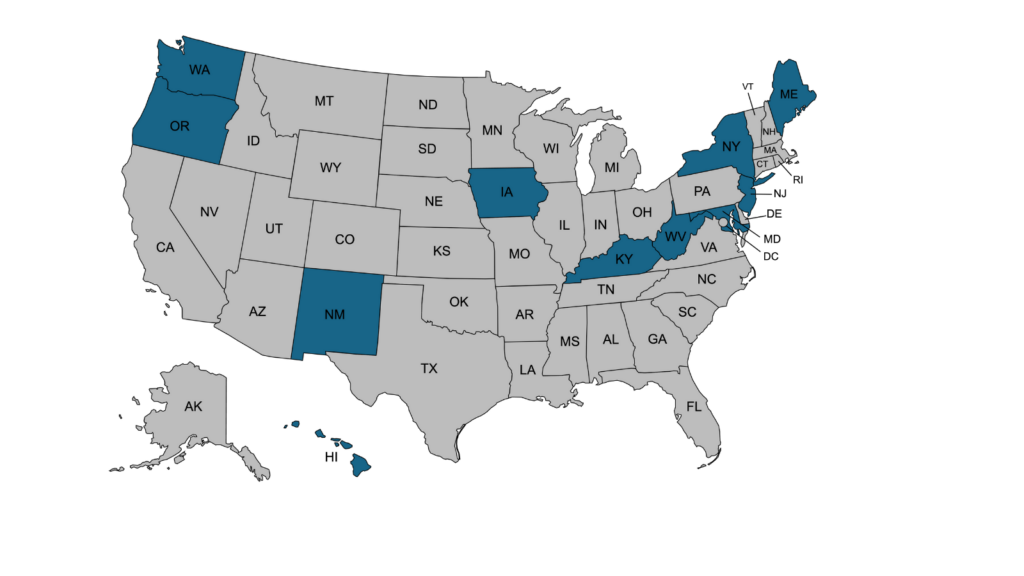
Most Americans are familiar with our civil liberties: the right to free speech, press, religion, and assembly, among others. What’s missing from this list, however, are the very things that allow us to speak, write, and gather in the first place: a healthy environment. The Green Amendment is a key tool in addressing this gap, as it expands state legal protections to recognize a healthy environment as an inherent, indefeasible, and generational right of all citizens.
Green Amendments (often called “environmental rights amendments”) are part of few states’ constitutions that serve to emphasize environmental health and safety as being part of basic civil liberties. To date, Pennsylvania and Montana are the only states with Green Amendments, with both having been established in the early 1970’s.
A handful of states have included language in their constitutions that make reference to environmental protection, pollution control, and other statutes relating to natural resource management for public health. Hawaii’s state constitution, for example, includes in Article XI a section that establishes “Environmental Rights” for its residents.
Provisions like Hawaii’s certainly provide important environmental protections. Green Amendments differ in that, by being placed in the Bill of Rights section of a state constitution, the rights are subject to legal protection not unlike that of one’s right to free speech, religion, and assembly. Putting environmental rights on equal footing with other fundamental political rights and noting them as inalienable can allow for a high level of legal defensibility. In addition to what many states already have included in their state constitutions regarding environmental rights, some see the Green Amendment as a powerful supplement.
There are several key provisions that were included in both Pennsylvania and Montana’s Green Amendments. The features below outline what has been recommended by Green Amendments For the Generations, a non-profit leader in the Green Amendment movement. Context differs state to state, so in states that are currently pursuing a Green Amendment, the language may differ slightly based on regional values and priorities.
Advocates have noted that Green Amendments can be the strongest when all of the above provisions are included. These features set the legal precedent for the protection of current and future generations’ rights and access to a clean and healthful environment.
Perhaps the most significant provision included in a Green Amendment is that which refers to the rights for all people. Environmental harm such as poor air quality, water quality, and lack of access to healthy natural spaces fall disproportionately on BIPOC (Black, Indigenous, and People of Color) communities. In fact, access to clean resources has been historically blocked for these communities; over half of people living within two miles of hazardous waste facilities are Black Americans and other POC. The Green Amendment is one way of addressing Environmental Racism through the power of more equitable state constitutional protections for environmental and public health.

Currently, five states have proposed Green Amendment language, and 11 states are interested and/or considering bills. Be sure to check back soon for a Part II of this Green Amendment blog for a brief history of its use in Pennsylvania and Montana and for more updates on states’ progress.